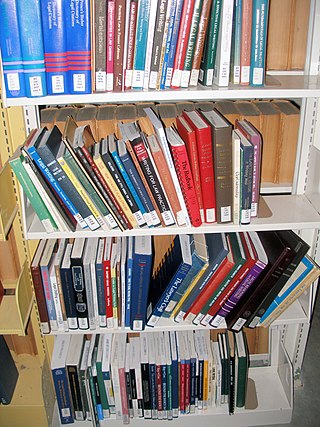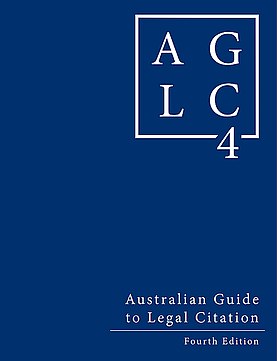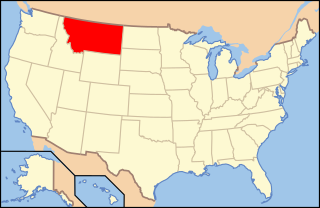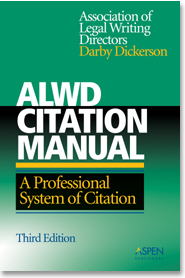In law, a citation or introductory signal is a set of phrases or words used to clarify the authority of a legal citation as it relates to a proposition. It is used in citations to present authorities and indicate how those authorities relate to propositions in statements. Legal writers use citation signals to tell readers how the citations support their propositions, organizing citations in a hierarchy of importance so the reader can quickly determine the relative weight of a citation. Citation signals help a reader to discern meaning or usefulness of a reference when the reference itself provides inadequate information.

Admission to the bar in the United States is the granting of permission by a particular court system to a lawyer to practice law in the jurisdiction. Each U.S. state and jurisdiction has its own court system and sets its own rules and standards for bar admission. In most cases, a person is admitted or called to the bar of the highest court in the jurisdiction and is thereby authorized to practice law in the jurisdiction. Federal courts, although often overlapping in admission standards with states, set their own requirements.

The Bluebook: A Uniform System of Citation is a style guide that prescribes the most widely used legal citation system in the United States. It is taught and used at a majority of U.S. law schools and is also used in a majority of federal courts. Legal publishers also use several "house" citation styles in their works.
The Association of Legal Writing Directors (ALWD), formed in 1996, is a non-profit professional association of directors and former directors of legal research, writing, analysis, and advocacy programs from law schools in the United States, Canada and Australia. The goal of this organization is to "improving legal education and the analytic, reasoning, and writing abilities of lawyers." The ALWD has more than 400 members representing more than 130 law schools.
In re, Latin for 'in the matter [of]', is a term with several different, but related meanings.
Legal citation is the practice of crediting and referring to authoritative documents and sources. The most common sources of authority cited are court decisions (cases), statutes, regulations, government documents, treaties, and scholarly writing.

Legal writing involves the analysis of fact patterns and presentation of arguments in documents such as legal memoranda and briefs. One form of legal writing involves drafting a balanced analysis of a legal problem or issue. Another form of legal writing is persuasive, and advocates in favor of a legal position. Another form legal writing involves drafting legal instruments, such as contracts and wills.

Bryan Andrew Garner is an American legal scholar and lexicographer. He has written more than two dozen books about English usage and style such as Garner's Modern English Usage for a general audience, and others for legal professionals. Garner also wrote two books with Justice Antonin Scalia: Making Your Case: The Art of Persuading Judges (2008) and Reading Law: The Interpretation of Legal Texts (2012). He is the founder and president of LawProse Inc.

The Australian Guide to Legal Citation (AGLC) is published by the Melbourne University Law Review in collaboration with the Melbourne Journal of International Law and seeks to provide the Australian legal community with a standard for citing legal sources. There is no single standard for legal citation in Australia, but the AGLC is the most widely used.
The Oxford University Standard for Citation of Legal Authorities (OSCOLA) is a style guide that provides the modern method of legal citation in the United Kingdom; the style itself is also referred to as OSCOLA. First developed by Peter Birks of the University of Oxford Faculty of Law, and now in its 4th edition, it has been adopted by most law schools and many legal publishers in the United Kingdom. An online supplement is available for the citation of international legal cases, not covered in the main guide.
Sentence spacing guidance is provided in many language and style guides. The majority of style guides that use a Latin-derived alphabet as a language base now prescribe or recommend the use of a single space after the concluding punctuation of a sentence.
A table of authorities is part of a legal brief that contains an index of the cases, statutes, and secondary sources cited. This article deals specifically with the characteristics of tables of authorities in the United States. The table of authorities, often called a TOA, is frequently a legal requirement for litigation briefs; the various state courts have different rules as to what kinds of briefs require a TOA. The TOA list has the name of the authority followed by the page number or numbers on which each authority appears, and the authorities are commonly listed in alphabetical order within each grouping. The intention is to allow law clerks and judges to easily and rapidly identify and access the legal authorities cited in a litigation brief.

Lesbian, gay, bisexual, and transgender (LGBT) people in the U.S. state of Montana may face some legal challenges not experienced by non-LGBT residents. Same-sex sexual activity has been legal in Montana since 1997. Same-sex couples and families headed by same-sex couples are eligible for all of the protections available to opposite-sex married couples, as same-sex marriage has been recognized since November 2014. State statutes do not address discrimination on the basis of sexual orientation and gender identity; however, the U.S. Supreme Court's ruling in Bostock v. Clayton County established that employment discrimination against LGBT people is illegal under federal law. A number of cities also provide protections in housing and public accommodations.
The Maroonbook is a system of legal citation that is intended to be simpler and more straightforward than the more widely used Bluebook. It was developed at the University of Chicago and is the citation system for the University of Chicago Law Review. As a simplified and modernized citation method, it tends to be closer to the Oxford Standard for Citation of Legal Authorities in its conventions.

The Indigo Book: An Open and Compatible Implementation of A Uniform System of Citation is a free content version of the Bluebook system of legal citation. Founded by New York University professor Christopher Jon Sprigman, authored collectively by Sprigman and a group of NYU law students, and published by Public.Resource.Org, it is an adaptation based on the 10th edition of the Bluebook as published by the Harvard Law Review Association in 1958, which had entered the public domain in the United States because its copyright had expired due to non-renewal.







